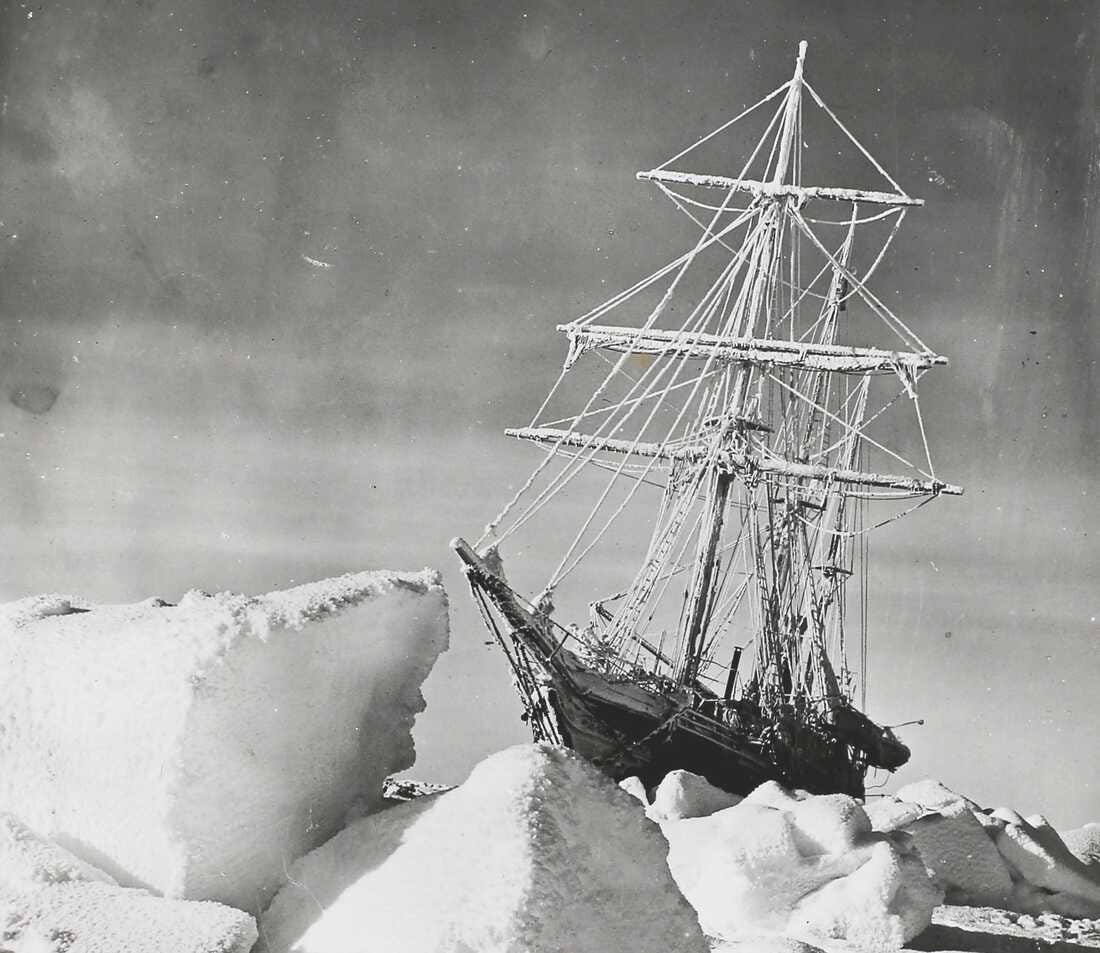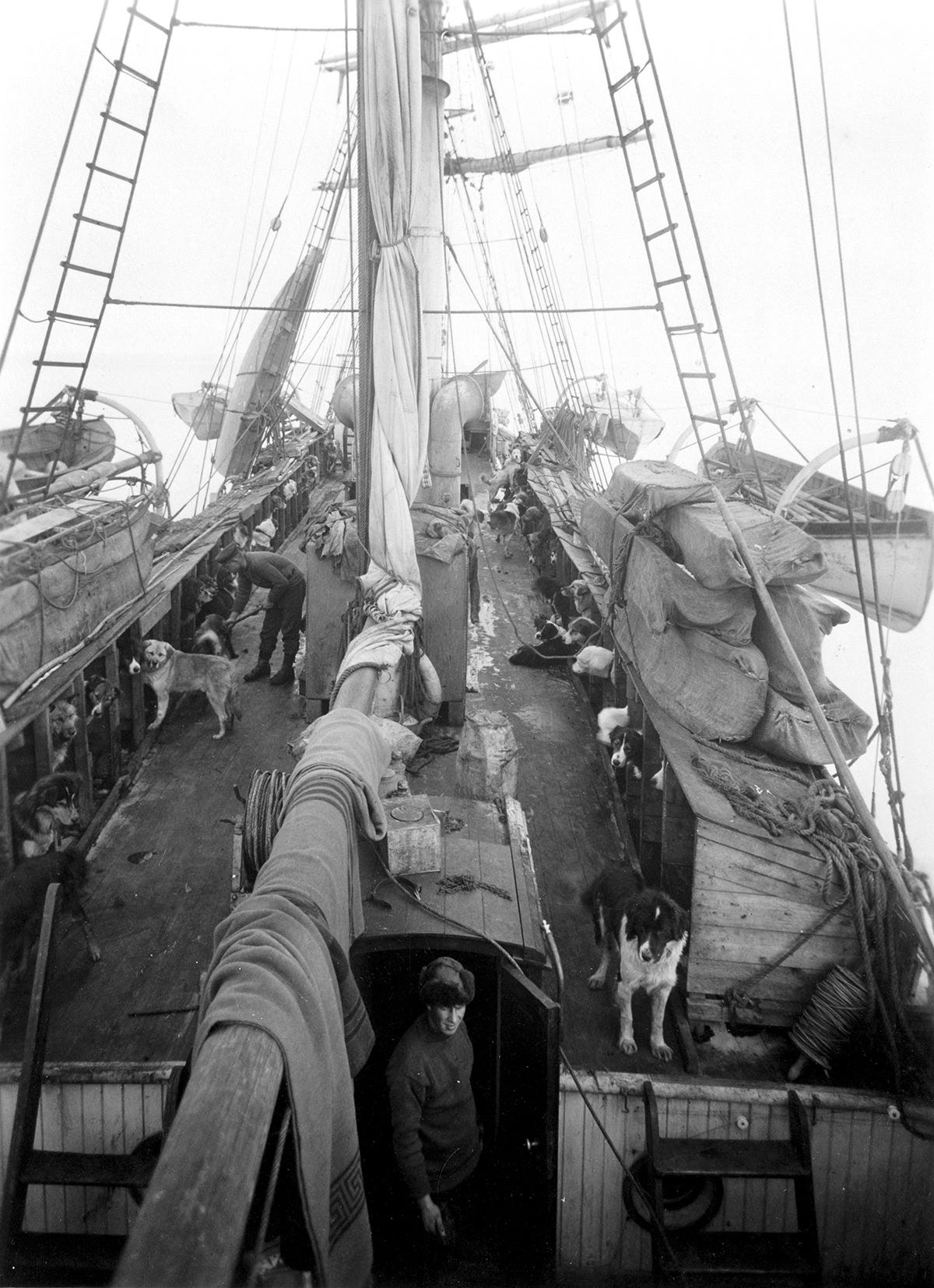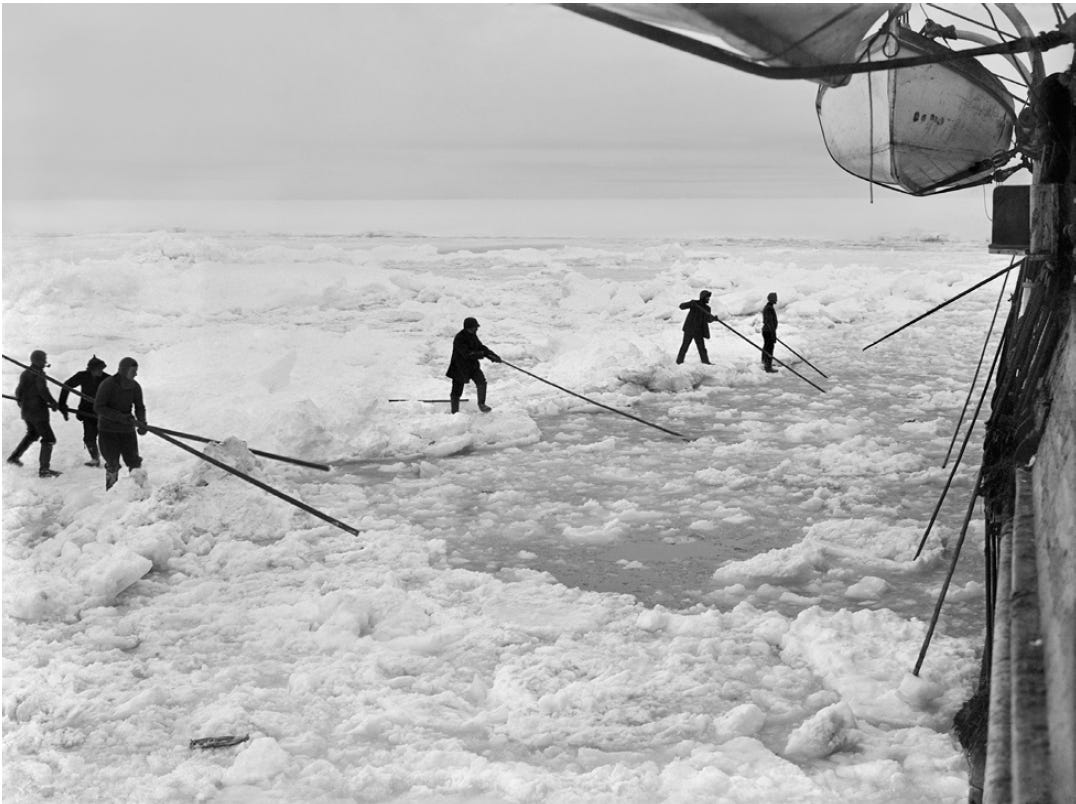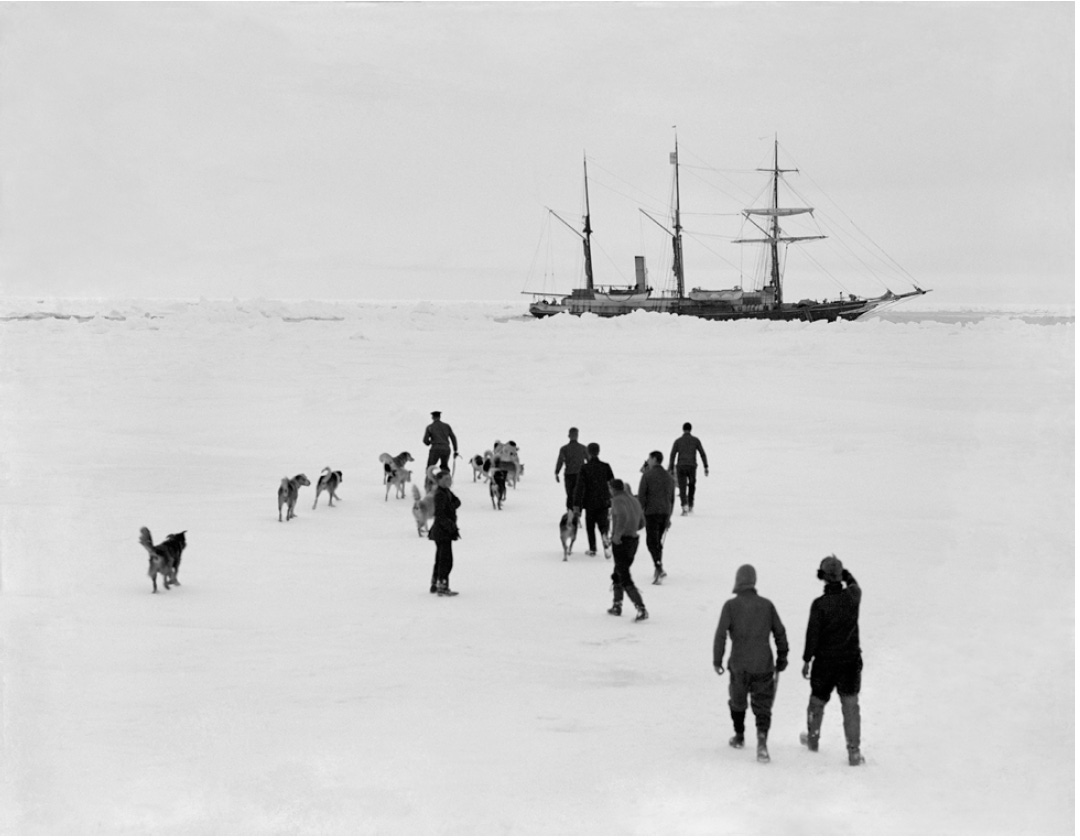Antarctica is a place that exists more in imagination than in reality. Sure, we all know that it’s a continent and can point to it on a map. But for some reason, it doesn’t feel real. In the same way, we all know that Mars exists, but not what it would feel like to wander around on the surface.
Afterall, do you know someone who’s been there? Certainly not your Aunt Gertrude. It’s not Myrtle Beach. Well, let’s just say that I know someone that’s been (sort of).
Enter Shackleton
Over the past few weeks, I’ve gotten to know Ernest Shackleton, the star of Alfred Lansing’s incredible novel, Endurance. The story follows the English explorer Shackleton and his crew of 27 men on an unprecedented journey into Antarctica. The crew intended to make history by crossing the icy continent, starting from below South America, and traversing to the Ross Sea, south of New Zealand. The crew set sail on December 5, 1914. This is their story.
The Imperial Trans-Antarctic Expedition
A journey as ambitious as crossing Antarctica, required an equally ambitious ship. Her Majesty’s Ship (HMS) Endurance was custom built for the journey. She was designed with three sails and powered by a coal-fired steam engine, capable of speeds of up to 10.2 knots (about 12 mph). Front to back, she measured about the size of half a football field, at 144 feet. With Antarctic conditions in mind, she was built for rugged strength. Her sides measured between about 2 and 2.5 feet in thickness, with the front of the ship measuring an incredible 4 feet, 3 inches in thickness. Her Norwegian designers selected a mix of Oak, Norwegian mountain fir, and greenheart, a wood weighing more than solid iron, so tough that it couldn’t be worked with ordinary tools.
I know what you might be thinking, dear reader. No matter how thick this ship might be, why make it out of wood? Surely, shipbuilders had access to iron and steel in the 1910’s? To that, I would first ask where you got your ship building degree from, smart guy? I did think the same thing though. It seems that the best answer is simply that wood would have been a more resilient material, given the frigid Antarctic conditions. Specifically, some theorize that wood was chosen because it was more flexible than metal, allowing it to absorb more pressure. At the time, steel contained higher concentrations of impurities making it much more brittle than today, a dangerous property given the immense pressure from packs of Antarctic ice. This brittleness was likely even more of an issue, given the frigid temperatures.
The Endurance set sail from a whaling station on South Georgia, a desolate island in the South Atlantic Ocean. Almost immediately, the expedition encountered difficulties. Two days in, the crew encountered ice. With a ship as formidable as the Endurance, you might think that the crew could simply plow through the pack of ice. Afterall, the front of the ship measured over 4 feet thick. This could not be further from the truth. The crew encountered a pack of ice measuring several feet thick and a half-mile wide. To ram into the ice sufficiently fast would be no different than plowing into solid rock. The men would no doubt have had the fate of the Titanic top of mind, given that it sank just a few years earlier in 1912.
Think about it like this, a journey into Antarctica is a war. Man against ice. The crew can never hope to win this war, but they can hope to not lose. By avoiding the ice, the men live to fight another day. As is true in other areas of life, the best offense is defense. Shackleton knew this all too well.
And so, the ship proceeded carefully, delicately twisting her way through the pack of ice for weeks. In the open ocean, the crew could expect to make 300 miles of progress a day, but in the pack, they would be lucky to travel a 10th of that. It was a snail’s pace. Relief finally came after the New Year of 1915 when the Endurance cleared the pack. The ice had lost its first battle and the crew enjoyed open ocean as a reward. Full steam ahead.
Heading south, Endurance enjoyed a few hundred miles of carefree sailing, dwarfed by icebergs towering more than a hundred feet in the air. But victory doesn’t last long in the Antarctic. The ship once again encountered ice, this time of a different form, a wicked sort of ice. The ship meandered through endless slush, an inviting soup of snow and crushed ice. Following six cold days, the Endurance soon found herself trapped. The slush had frozen into a thick crust that now encircled her. The crew heaped coal into the furnaces, running the engines at full speed ahead in a desparate attempt to break through the ice. For hours, the endurance strained against the ice, without gaining a foot. Defeat.
With falling temperatures and the coming of the Antarctic Winter, Shackleton recognized the futility of attempting to break through. They were stuck.
“Frozen like an almond in the middle of a chocolate bar.” - Thomas Orde-Lees, storekeeper
And so, with Endurance trapped in the ice, its brave crew could only sit and wait out the Winter, drifting with the pack wherever the wind and currents pleased…
To be continued in Part II & III.
Thanks for reading guys. If you enjoyed this one, make sure to subscribe to recieve Part II & III and consider sharing with a friend.
If you’re interested in more detail, I highly recommend picking up the book: Endurance (Amazon Link). It’s a very inspiring read.







Like an almond, lol nice. Good analogy about war!
That first pic goes hard